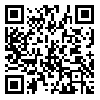Volume 17, Issue 4 (Vol.17, No.4, Winter 2022 2022)
irje 2022, 17(4): 372-379 |
Back to browse issues page
Download citation:
BibTeX | RIS | EndNote | Medlars | ProCite | Reference Manager | RefWorks
Send citation to:



BibTeX | RIS | EndNote | Medlars | ProCite | Reference Manager | RefWorks
Send citation to:
Salehi M, Saberi Z, Karimi F, Abbasi F. Evaluation of Frequency Distribution of Oral Diffuse Pigmentation in Patients Presenting to Oral Diseases Department of Isfahan Dental School in Second Three-Month Period of 2019. irje 2022; 17 (4) :372-379
URL: http://irje.tums.ac.ir/article-1-7137-en.html
URL: http://irje.tums.ac.ir/article-1-7137-en.html
1- Assistant Professor, Department of Oral and Maxillofacial Medicine, School of Dentistry, Dental Research Center, Dental Research Institute, Isfahan University of Medical Sciences, Isfahan, Iran
2- Graduate Student, Dental Students Research Committee, School of Dentistry, Isfahan University of Medical Sciences, Isfahan, Iran
2- Graduate Student, Dental Students Research Committee, School of Dentistry, Isfahan University of Medical Sciences, Isfahan, Iran
Abstract: (1443 Views)
Background and Objectives: Epidemiological studies have indicated the prevalence of a wide spectrum of diffused pigment lesions throughout the world and Iran. The aim of this study was to determine the frequency distribution of oral diffused pigment lesions in patients presenting to Oral Diseases Department of Isfahan Dental School.
Methods: A cross-sectional descriptive study was conducted on 303 patients presenting to Oral Diseases Department of Isfahan Dental School during the first three-month period of 2019. The demographic data, location of lesions, and type of lesions were recorded in a checklist and analyzed with the SPSS version 22 using Chi square, Mann Whitney test, Fisher's exact test, and spearman correlation coefficient. The level of significance was set at 5%.
Results: In this study, 303 patients were examined of whom 93 (30.69%) were diagnosed with diffused pigment lesions. As for the pigmentation severity, the patients were grouped into low, moderate, and high with 54 persons (58%), 13 persons (14%) and 26 persons (28%) in each group, respectively. The most frequent site was labial gingiva and the most common type was the physiologic type. The results showed that gender had no effect on the frequency distribution (P=0.09) but gender and age had significant effects on the severity of pigmentation (P=0.047, r=0.459 and P<0.001 respectively). Skin color had a significant effect on the type of pigmentation
(P < 0.001).
Discussion: The frequency of oral diffuse pigmentation in patients presenting to the Isfahan dental school was noticeable.
Methods: A cross-sectional descriptive study was conducted on 303 patients presenting to Oral Diseases Department of Isfahan Dental School during the first three-month period of 2019. The demographic data, location of lesions, and type of lesions were recorded in a checklist and analyzed with the SPSS version 22 using Chi square, Mann Whitney test, Fisher's exact test, and spearman correlation coefficient. The level of significance was set at 5%.
Results: In this study, 303 patients were examined of whom 93 (30.69%) were diagnosed with diffused pigment lesions. As for the pigmentation severity, the patients were grouped into low, moderate, and high with 54 persons (58%), 13 persons (14%) and 26 persons (28%) in each group, respectively. The most frequent site was labial gingiva and the most common type was the physiologic type. The results showed that gender had no effect on the frequency distribution (P=0.09) but gender and age had significant effects on the severity of pigmentation (P=0.047, r=0.459 and P<0.001 respectively). Skin color had a significant effect on the type of pigmentation
(P < 0.001).
Discussion: The frequency of oral diffuse pigmentation in patients presenting to the Isfahan dental school was noticeable.
Type of Study: Research |
Subject:
Epidemiology
Received: 2022/08/1 | Accepted: 2022/03/22 | Published: 2022/03/22
Received: 2022/08/1 | Accepted: 2022/03/22 | Published: 2022/03/22
| Rights and permissions | |
 |
This work is licensed under a Creative Commons Attribution-NonCommercial 4.0 International License. |





